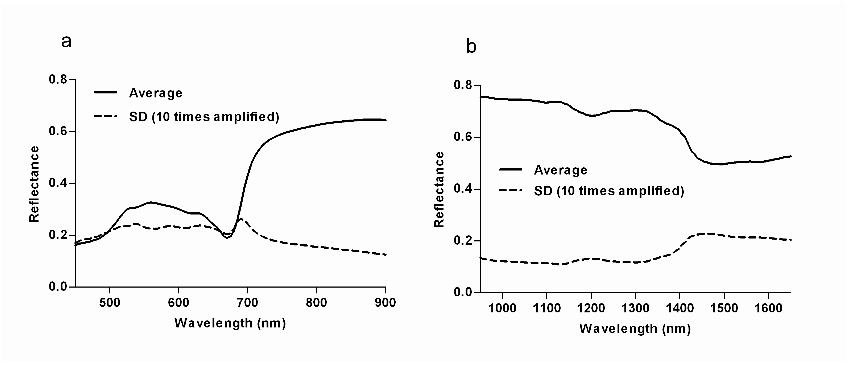Q1. What are the contributions mentioned in the paper "Preliminary study on the use of near infrared hyperspectral imaging for quantitation and localisation of total glucosinolates in freeze-dried broccoli" ?
1 The use of hyperspectral imaging to ( a ) quantify and ( b ) localise total glucosinolates in 2 florets of a single broccoli species has been examined. Two different spectral regions 3 ( vis-NIR and NIR ), a number of spectral pre-treatments and different mask development 4 strategies were studied to develop the quantitative models. The procedure demonstrates potential for the 7 quantitative screening and localisation of total glucosinolates in broccoli using the 9508 1650 nm wavelength range.




